Garden & outdoor
The Best Bike Helmet for Commuters
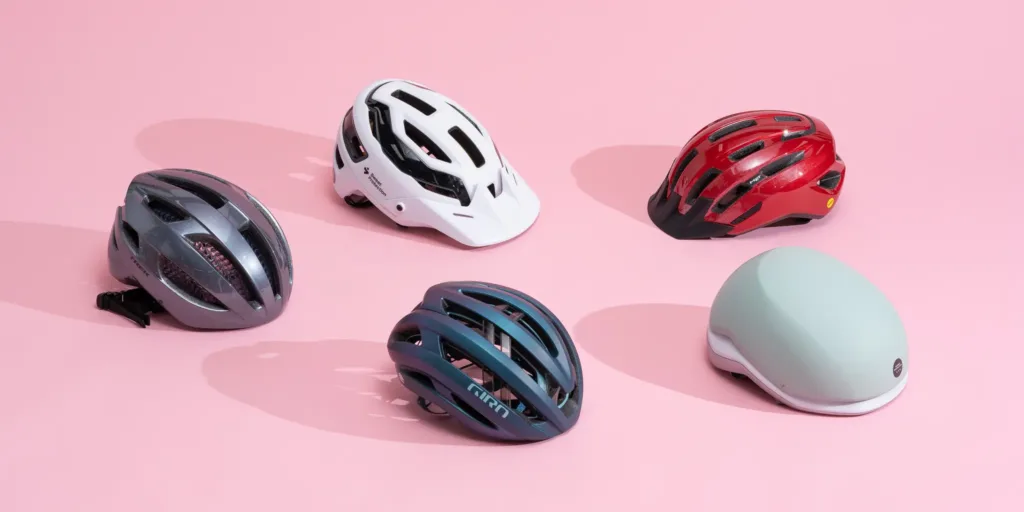
No one ever plans on falling off their bike.
But if you ride long enough, even the most casual cyclist will experience a mishap, which is why wearing a helmet is always essential.
Over the past ten years, we’ve tested more than 30 helmets to conclude that the Met Downtown Mips is the best bike helmet for most everyday riders.
Menu
Everything we recommend
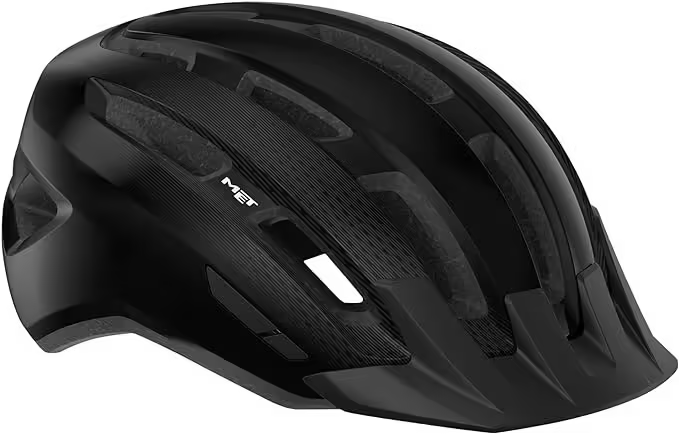
Met Downtown Mips
The best commuter helmet
Our top pick for most commuters, this affordable helmet is comfortable, versatile, and scores well in safety tests, though it only comes in two sizes.
The Met Downtown Mips is a lightweight, comfortable helmet that scores well in Virginia Tech safety tests. With a low-key design and removable visor, it suits casual commuters and weekend riders. Despite being one of the most affordable helmets on Virginia Tech’s 2023 top-25 list, it doesn’t compromise on fit or features. The slim, user-friendly straps and effective ventilation make it a standout, though it only comes in two sizes, and the crash-replacement policy could be better.

Trek Starvos WaveCel Cycling Helmet
Less versatile, but generous crash replacement
This lightweight, aerodynamic helmet offers great ventilation and a top-notch crash-replacement policy, ideal for drop-bar bike riders.
The Trek Starvos WaveCel Cycling Helmet uses a unique WaveCel liner for anti-rotational protection, offering good ventilation for road biking and eliminating the standard Mips liner. However, its venting is less effective in upright riding positions, making it less versatile than the Met Downtown Mips. Trek’s excellent one-year crash-replacement policy helps justify its higher price.
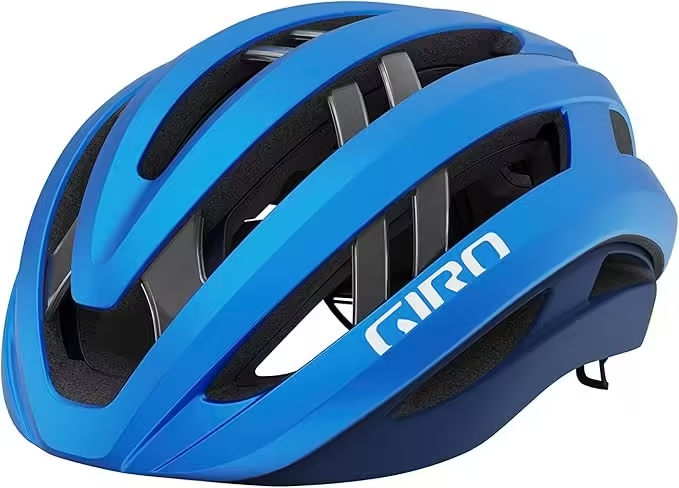
Giro Aries Spherical
For ultra-serious road cyclists
This top-rated helmet in Virginia Tech’s safety tests is the lightest and best-ventilated we tried, though it’s also the priciest. Ideal for dedicated road cyclists or those highly concerned about concussion protection.
The Giro Aries Spherical is our priciest but lightest and most comfortable helmet, topping the 2023 Virginia Tech safety ratings. Its sleek ball-and-socket Mips design, adjustable straps, and excellent ventilation make it feel barely there. However, despite the high cost, the crash-replacement policy is limited.

Specialized Mode
For city streets
Designed for upright riding, this commuter-friendly helmet excels over other urban-style models and scored exceptionally well in Virginia Tech’s crash tests.
The Specialized Mode resembles a bucket-style helmet popular with casual riders, but it defies expectations with smart venting and a sixth-place ranking on Virginia Tech’s list. However, it’s less versatile for road biking, and the crash-replacement policy is limited.
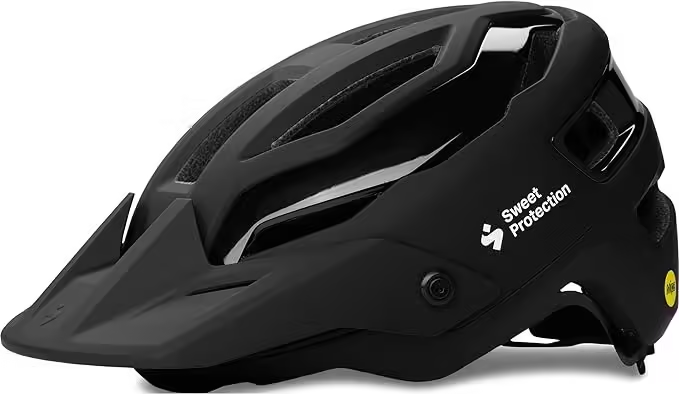
Sweet Protection Trailblazer Mips
For all-around mountain biking
A top performer in Virginia Tech’s safety tests, this helmet is designed for mountain biking, offering more coverage at the back of the head but is heavier than our top pick.
The Sweet Protection Trailblazer Mips is a top performer in Virginia Tech’s tests, ideal for trail riders with extra coverage for the back of the head. It’s heavier than our top pick, and the visor isn’t removable, but it offers a relaxed, versatile style for both trails and streets.
Who this is for
This guide is for commuters—those who bike for transportation rather than sports. It includes options for riders on upright bikes (like hybrids or city bike-share models), road or gravel bikes (who ride in a more aerodynamic position), and an upgraded pick for light, well-ventilated helmets for weekend adventures.
How we picked
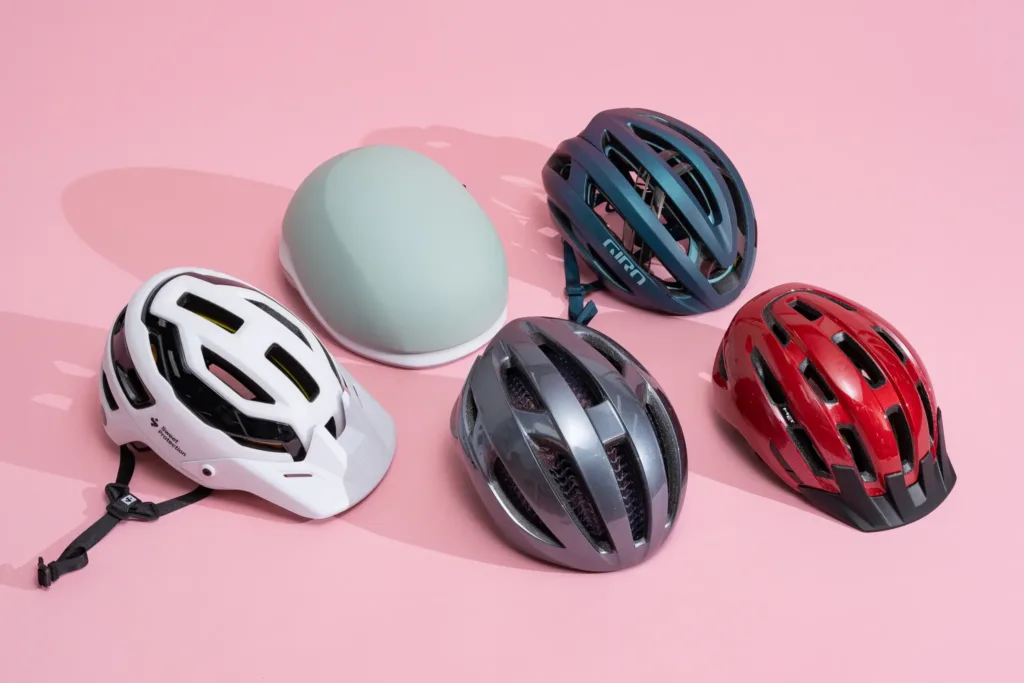
After extensive research, we established the following criteria for testing each helmet:
Five-star rating from Virginia Tech: In the US, all helmets must pass CPSC crash tests, but Virginia Tech goes further, evaluating helmets based on their ability to reduce concussion risk. A five-star rating means a helmet can reduce concussion risk by at least 70%, compared to not wearing one. In 2023, 128 out of 217 helmets tested received this rating.
Virginia Tech score of 12.08 or below: This score indicates a 75% reduction in concussion risk. We limited our testing to helmets with this rating or better, narrowing the field to 75 helmets.
Mips or similar anti-rotational technology: While opinions vary, most top-rated helmets feature Mips or comparable technology, which helps reduce concussion risk by minimizing rotational forces during impact.
Crash-replacement program: Helmets are single-use in crashes, so we focused on companies offering a robust crash-replacement policy—either free replacements or significant discounts—to ensure long-term value.
Good ventilation: We prioritized helmets with excellent airflow, especially for riders in warmer climates or those riding at higher speeds.
Adjustable fit: Proper fit is crucial for safety. We tested helmets with adjustable systems, ensuring a secure, comfortable fit for various head shapes and sizes.
Reasonable price: Helmets that meet all these standards can cost as little as $55, though the best models typically fall around $100. The most expensive helmet we tested was $300, but a strong crash-replacement policy can justify spending more.
How we tested
To test bike helmets, we focus on key factors like ventilation, comfort, chin straps, retention systems, and fit. For this guide, I rode over 1,300 miles testing 11 helmets on various terrains, including roads, bike paths, mountain trails, and cyclocross races. I also evaluated how each helmet performed on different bike types and in weather ranging from 45 to 95 degrees Fahrenheit.
Our pick: Met Downtown Mips
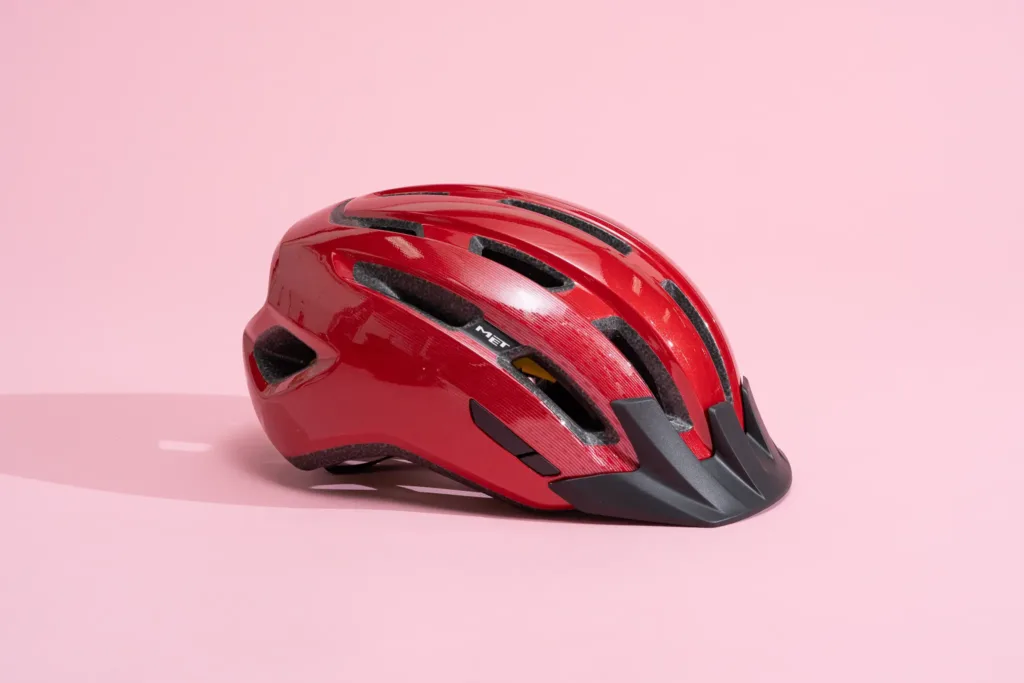
The Met Downtown Mips is our top choice for most commuters. It’s a comfortable, versatile helmet that excels in safety tests and is available in five colors.
It outperformed many higher-priced helmets in Virginia Tech’s tests, ranking among the top 25 helmets for safety. At just $80, it’s one of only three helmets under that price to make the list (with the average price of the other helmets being $180). While I also tested the $65 Giant Rev Comp Mips (soon to be discontinued) and the $55 Specialized Align II, I found the Downtown Mips’ slimmer profile, adjustable chin straps, and better crash-replacement policy made it worth the extra investment.
The Met Downtown Mips helmet features fully adjustable straps, allowing you to customize the fit. Like all helmets tested, it includes an adjustable chin strap buckle, but it also offers the ability to adjust how the chin straps sit around your ears. The smooth, lightweight straps are routed through a simple V-shaped buckle and work well, though you can’t adjust them mid-ride without taking both hands off the handlebars.
Weighing just 302 grams, it’s one of the lightest helmets I tested. Removing the visor brings it down to 282 grams, which is ideal for riders in a drop-bar position, where the helmet’s weight rests on your neck. However, on a flat-bar bike, weight matters less, and the visor is great for blocking sun or rain.
With 17 vents, the Downtown Mips ensures excellent airflow, keeping you cool in any riding position. The removable pads are washable and prevent hair from getting caught, a common issue with some helmets. Overall, the Met Downtown Mips is highly versatile, offering great performance on the road, trail, or beach.
Flaws but not dealbreakers
If you crash while wearing the Met Downtown Mips helmet, Met offers a 50% crash-replacement discount for the first two years, which is helpful but not as generous as some other brands. The helmet comes in two sizes (small/medium and medium/large), which is fewer than our other picks that offer more size options.
This helmet also doesn’t have enough space for a ponytail, forcing me to ride with sweaty hair on my neck. The Mips liner, while effective, is less refined compared to the more integrated anti-rotational systems found in our runner-up and upgrade picks.
Runner-up: Trek Starvos WaveCel Cycling Helmet
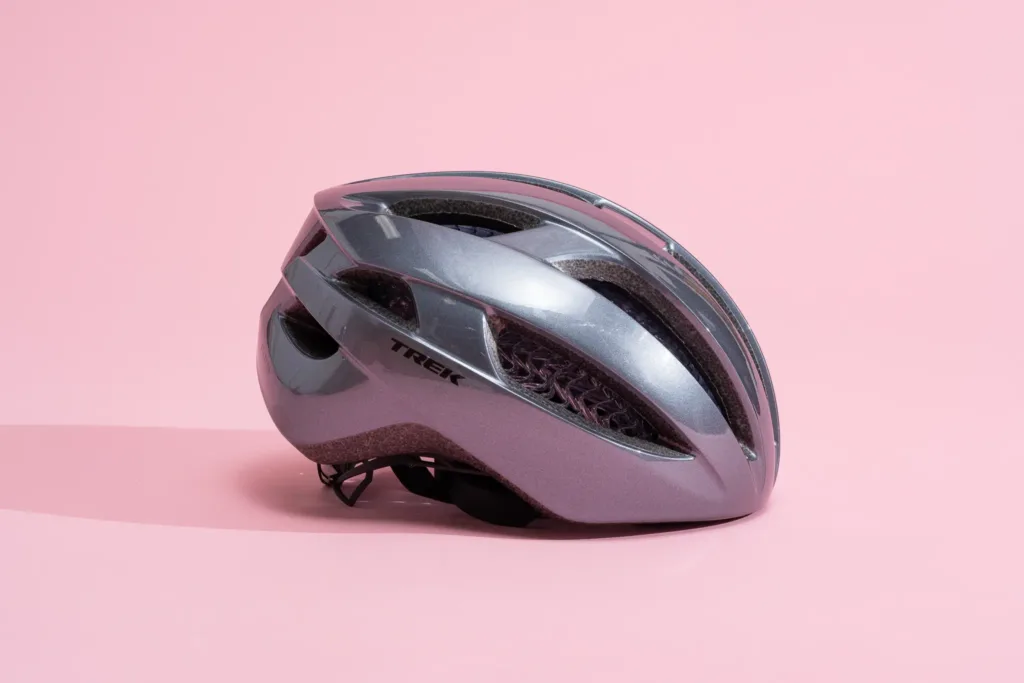
The Trek Starvos WaveCel Cycling Helmet has a sleek, aerodynamic design and is comfortable, but it lacks versatility between bike types. It uses WaveCel, Trek’s proprietary anti-rotational technology, which tests well and helps absorb impact forces. However, the helmet’s performance varies depending on your riding position. On a road bike with drop bars, it provides good airflow, but on an upright flat-bar bike, it doesn’t ventilate as well, making it less versatile than our top pick. The Starvos is a solid choice for road biking but less ideal for other bike styles.
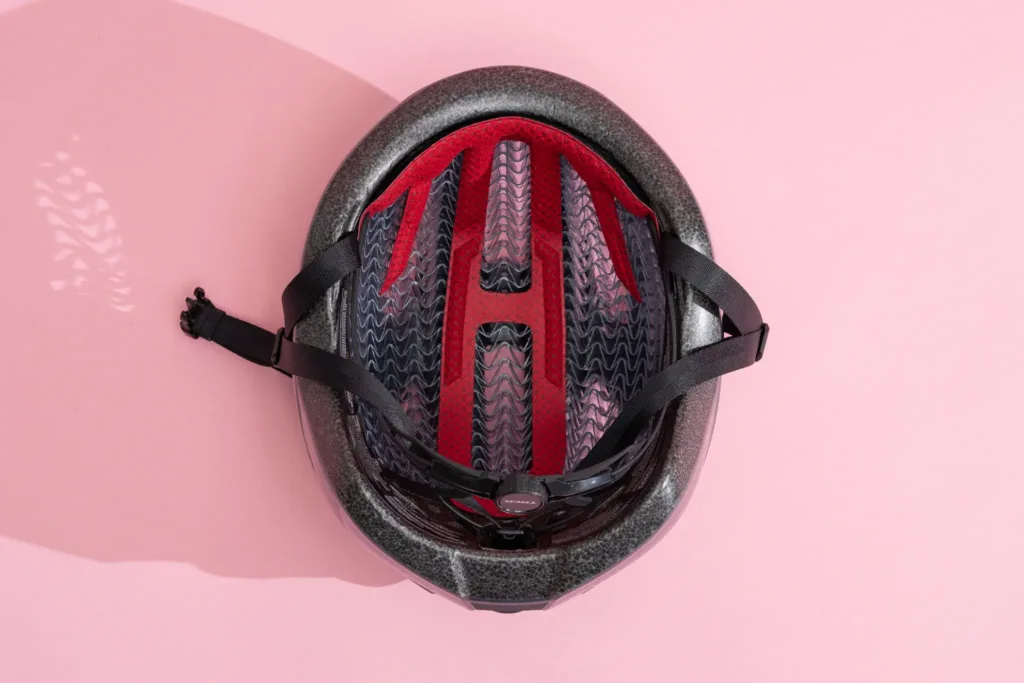
If you primarily ride bikes with drop handlebars, the Trek Starvos helmet is very comfortable. In an aerodynamic position, it allows air to flow through the helmet, keeping you cool. The one-piece removable pads attach directly to the WaveCel insert, helping reduce sweat even during intense rides. At 301 grams, it’s the second lightest helmet I tested, only lighter than our upgrade pick. It’s available in five sizes, fitting most head shapes, and features an adjustable chin strap that can be easily adjusted while riding.
Trek’s crash-replacement policy is generous, offering a free replacement within the first year after purchase if you crash. However, the Starvos is more expensive and scored lower than our top pick in safety tests.
Upgrade pick: Giro Aries Spherical
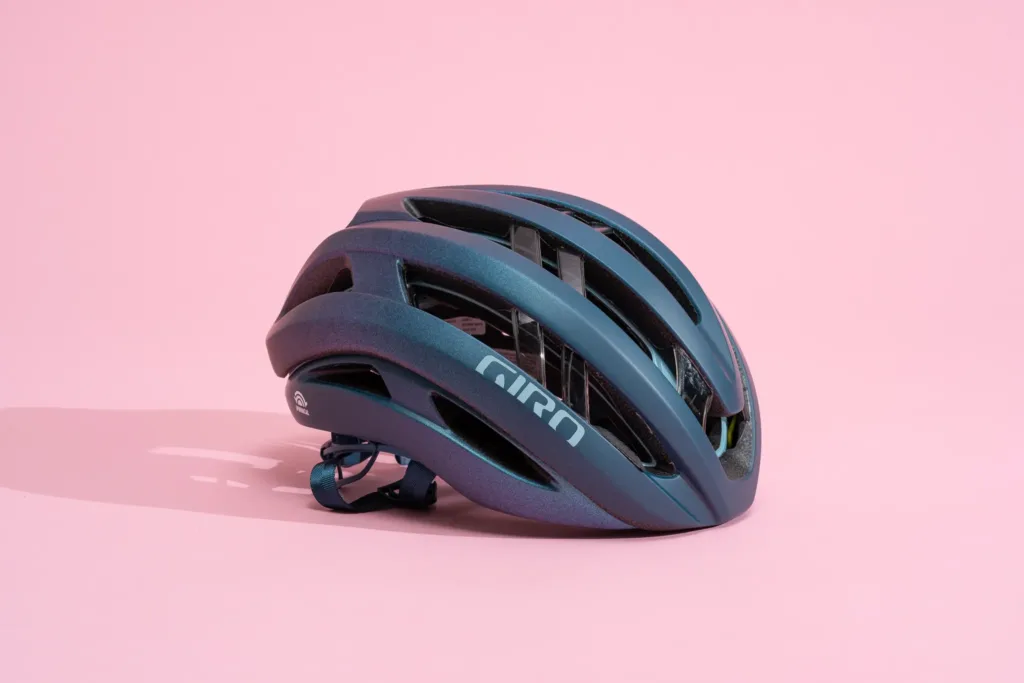
If you believe the best helmet is one you barely notice, the Giro Aries Spherical is the way to go. Available in eight colors, each with reflective safety tape on the back for visibility.
At $300, it’s the most expensive helmet we tested. For that price, we’d have liked a better crash-replacement policy—Giro offers 30% off a replacement, but only once a year.
Still, it’s Virginia Tech’s top-rated helmet, with an 82.3% reduction in concussion risk and a score of 8.4.

The Giro Aries Spherical features a unique ball-and-socket anti-rotation system. Unlike traditional slip-plane designs, the helmet uses dual-density foam layers that glide smoothly over each other, suspended by an elastomer. This system is integrated seamlessly, providing a sleek and effective design that’s satisfying to twist and feel.
The Giro Aries Spherical is the most comfortable helmet I tested, thanks to its Mips collaboration and innovative Spherical design, which removes the plastic layer found in traditional Mips systems. This design allows for wind channels and additional padding, making it feel lighter and more breathable. At just 240 grams, it’s the lightest helmet I tried, and my friend described it as feeling like “wearing nothing” on a long gravel ride.
The helmet also features a silicone bead on the headband to redirect sweat, and while hard to quantify, I never had sweat drip into my eyes. It’s easy to adjust with a V-shaped slider and has a slim chin buckle, making it versatile and comfortable for different riding styles. Although pricier, it’s a great option for riders who switch between road and commuter bikes.
Also great for city streets: Specialized Mode
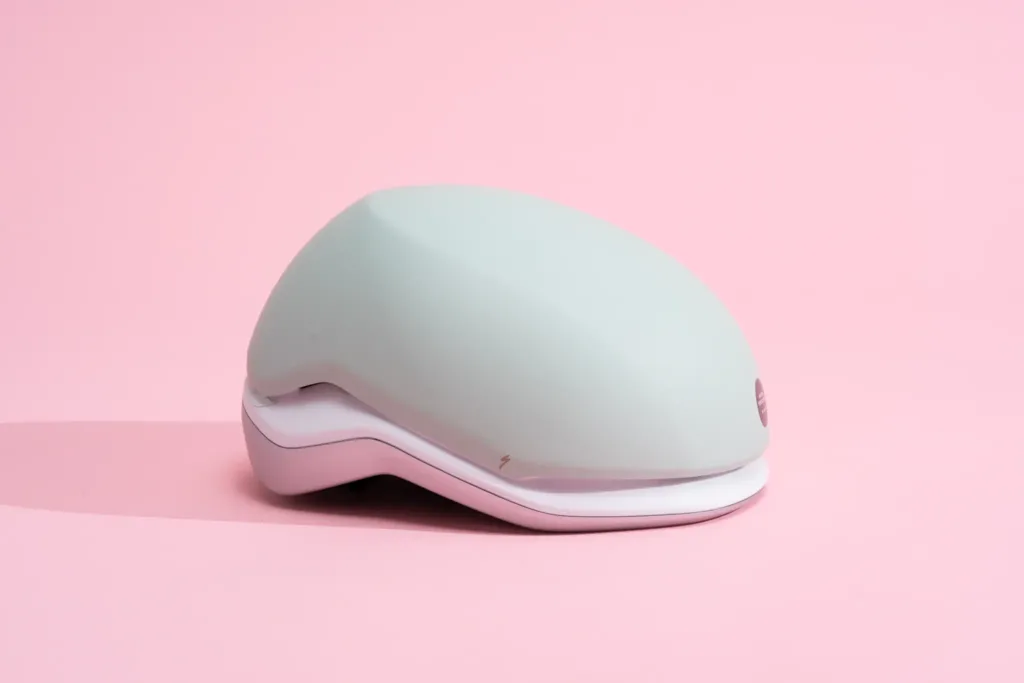
The Specialized Mode helmet surprised me with its performance. Styled like the classic half-dome WWII helmets, it’s designed for riders who prefer a more casual look, but it outperforms other helmets of its kind. Available in five earth-tone colors, it’s a standout option for those seeking style and comfort.
Despite weighing 397 grams, the heaviest helmet I tested, the Mode offers great ventilation. It features a double-layer shell with eight vents that work together like an intake-cooling system, ensuring airflow even without visible venting. I felt a cool breeze while riding my upright-style cruiser, even when carrying my child. The smooth outer shell also kept my hair dry during a surprise shower. The helmet comes in three sizes and two fit options: classic and round fit.

The Specialized Mode helmet performed better than expected in safety tests, ranking sixth in the Virginia Tech helmet ratings—making it the top urban-style helmet. Most urban helmets typically score much lower, likely due to factors like foam density.
However, the Mode is designed specifically for city riding. It feels heavy and uncomfortable on a drop-bar bike, where the helmet’s ventilation system is ineffective due to the low riding position. The Mode also features fixed harness straps, which work well for cruiser or hybrid bikes but aren’t as versatile for other types of riding.
The crash-replacement policy is decent but not exceptional. Specialized offers 35% off a new helmet within the first three years, 25% off in the fourth year, and 20% off in the fifth year.
Also great for mountain bikers: Sweet Protection Trailblazer Mips
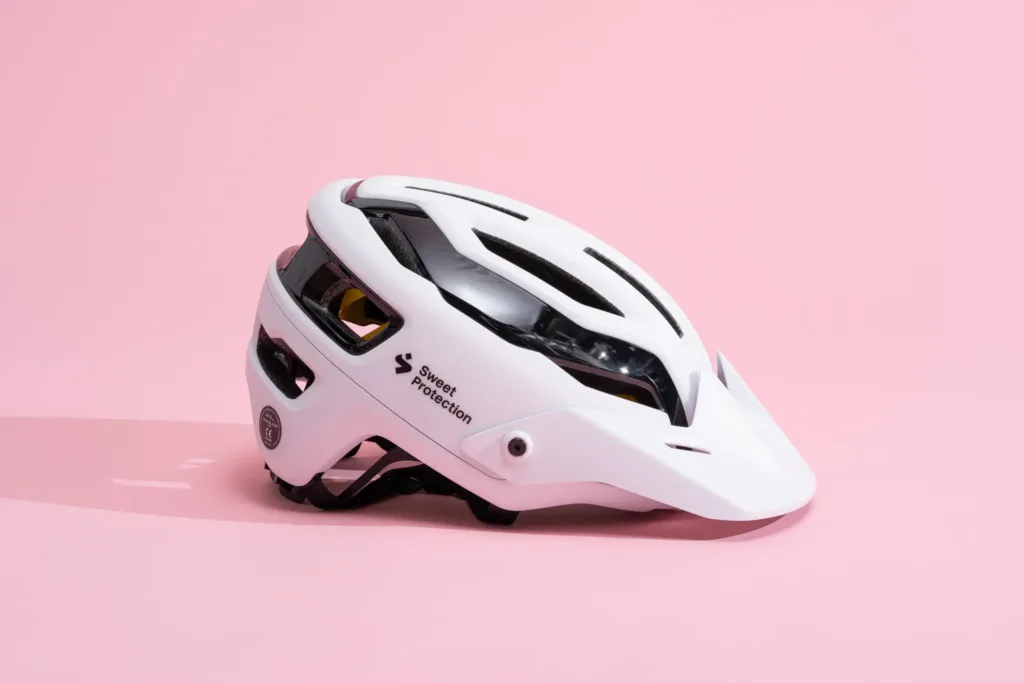
The Sweet Protection Trailblazer Mips helmet is a top-rated mountain bike helmet available in 10 cool colors. It has a relaxed, adventurous style, perfect for riders who may go from running errands to hitting the trails.
This helmet also performed well in safety tests, scoring fifth in Virginia Tech’s rankings, just ahead of the Specialized Mode. With its standard Mips slip-plane layer, the Trailblazer provides excellent protection, especially for those who regularly take spills on the trail—like I did, crashing four times while wearing it.
Even if you’re not a mountain biker, a helmet like this, which offers better coverage for the back of the head, could be worth considering. Mountain-bike-style helmets are known for providing enhanced protection compared to road helmets, with four out of the top 10 helmets on Virginia Tech’s list being mountain-bike models, many made by Sweet Protection.

Road and gravel riders might prefer other helmets. Mountain-bike helmets like the Sweet Protection Trailblazer, weighing 374 grams, tend to be heavier and often include a non-detachable visor, which may not suit road cyclists. While the lack of a visor can be an advantage for flat-bar bikes or weekend trail rides, the fixed harness straps are better suited for mountain biking. The helmet comes in three sizes but only one head shape. The crash-replacement discount is 40% for the first three years, which lasts longer than other models but isn’t as high.
